Final year project
Redesigning the Electrocardiogram (ECG) to Improve Device Connectivity, Accuracy and Ease… [Read more]
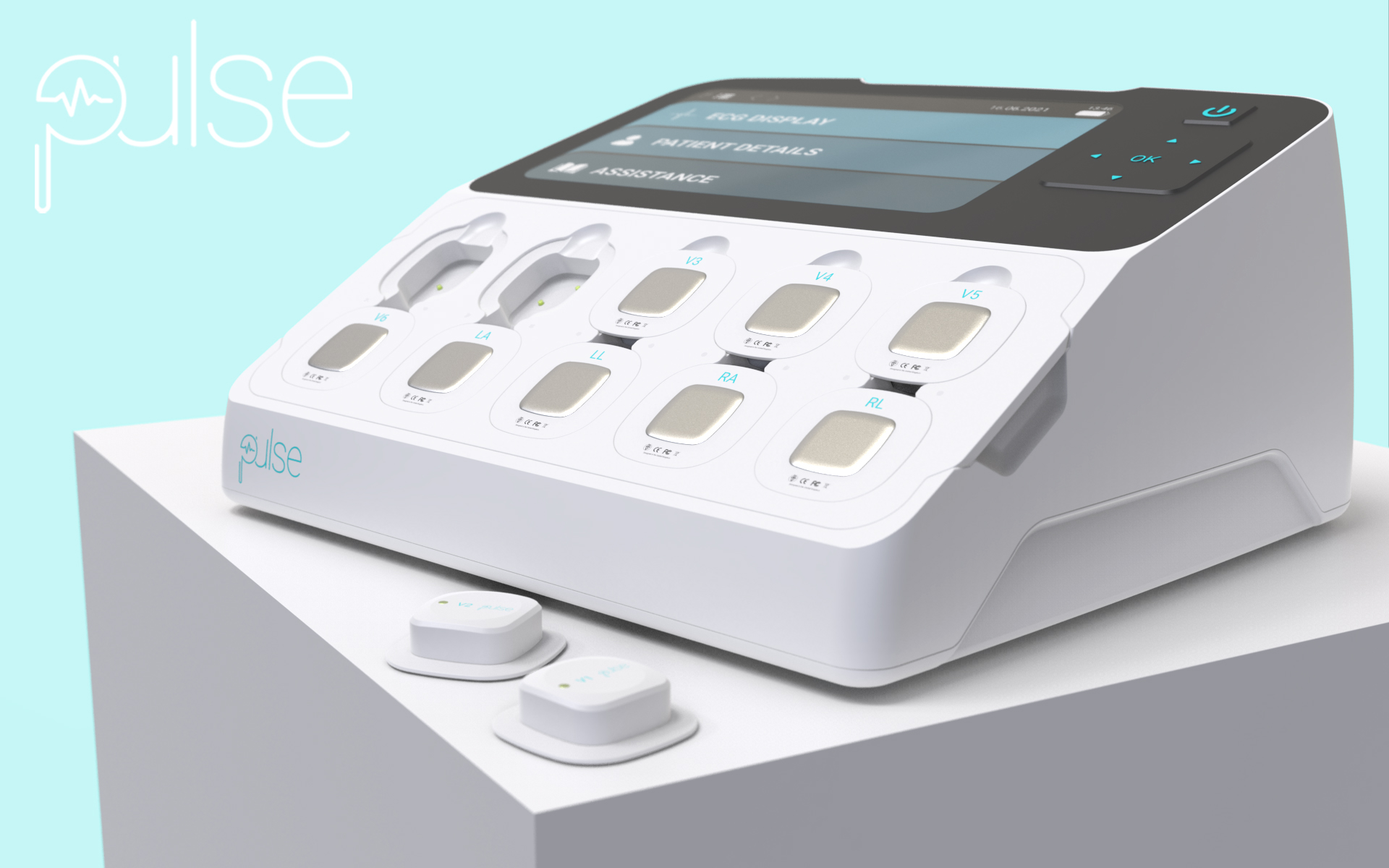
This is Pulse.
Pulse is a streamlined and ergonomic re-design of an Electrocardiogram (ECG), a device in frequent daily use in all hospitals and medical settings. It utilises wireless technology to eliminate the frustrating and time-consuming issue of tangled wires to improve the speed and accuracy of a diagnosis. For the health professional, Pulse provides the electrodes in a handy removable charging tray for bed-side use. It is operated via an intuitive touch screen user interface and uniquely for an ECG, can now transmit the trace results securely to online patient medical records.


Electrodes
Here are some close-up images of the electrodes. These are able to detect a patient's heartbeat and send a wireless signal back to the main device. A fundamental redesign of the electrodes has not only improved contact between the electrodes and patient but has also increased patient comfort while reducing the possibility of electrode dislodgment.
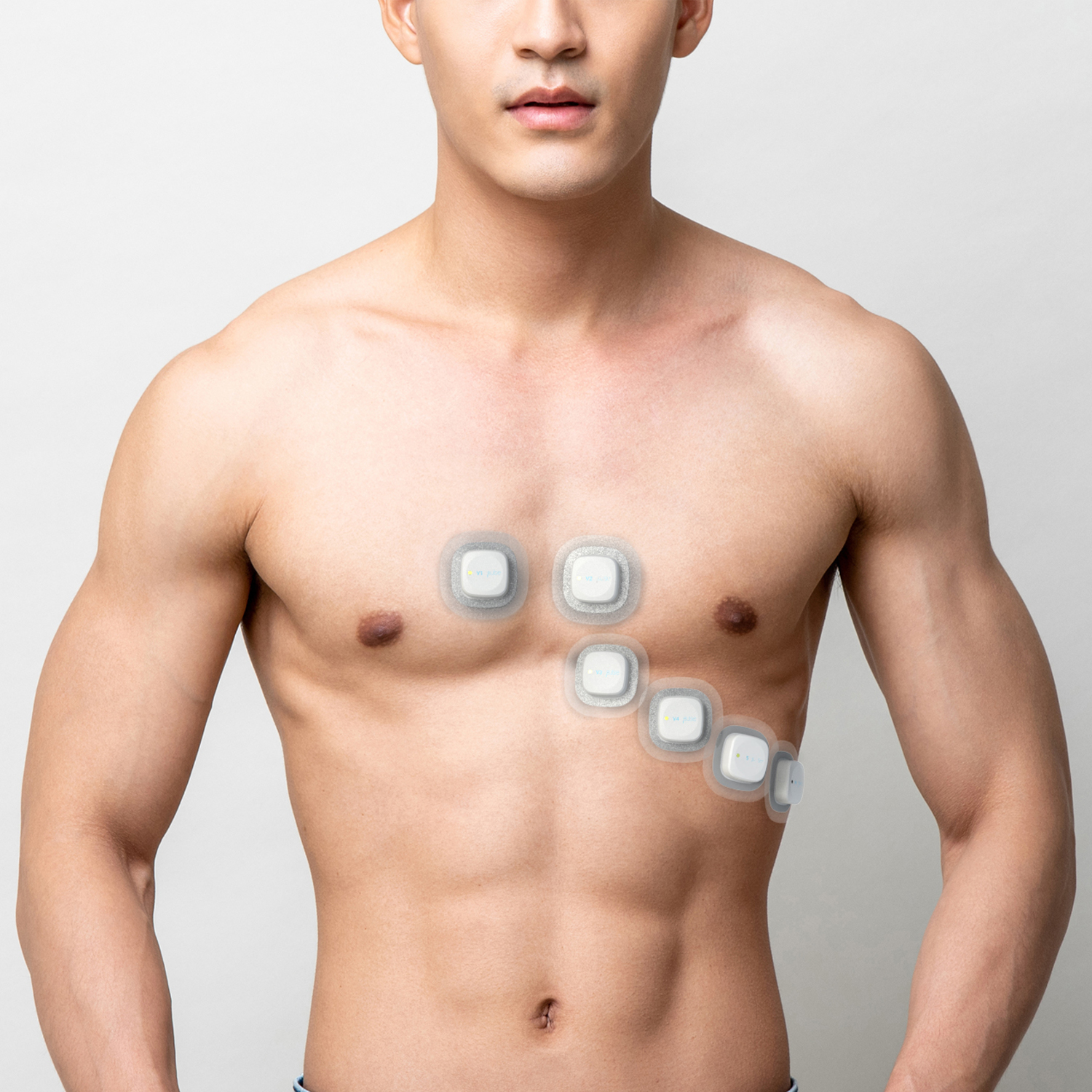

Electrodes Positioned On User (Male)
This image represents how the electrodes would be positioned on a user’s chest As there are no wires covering the user, their experience of having an ECG test is now made more comfortable with less chance of the electrodes being pulled off.
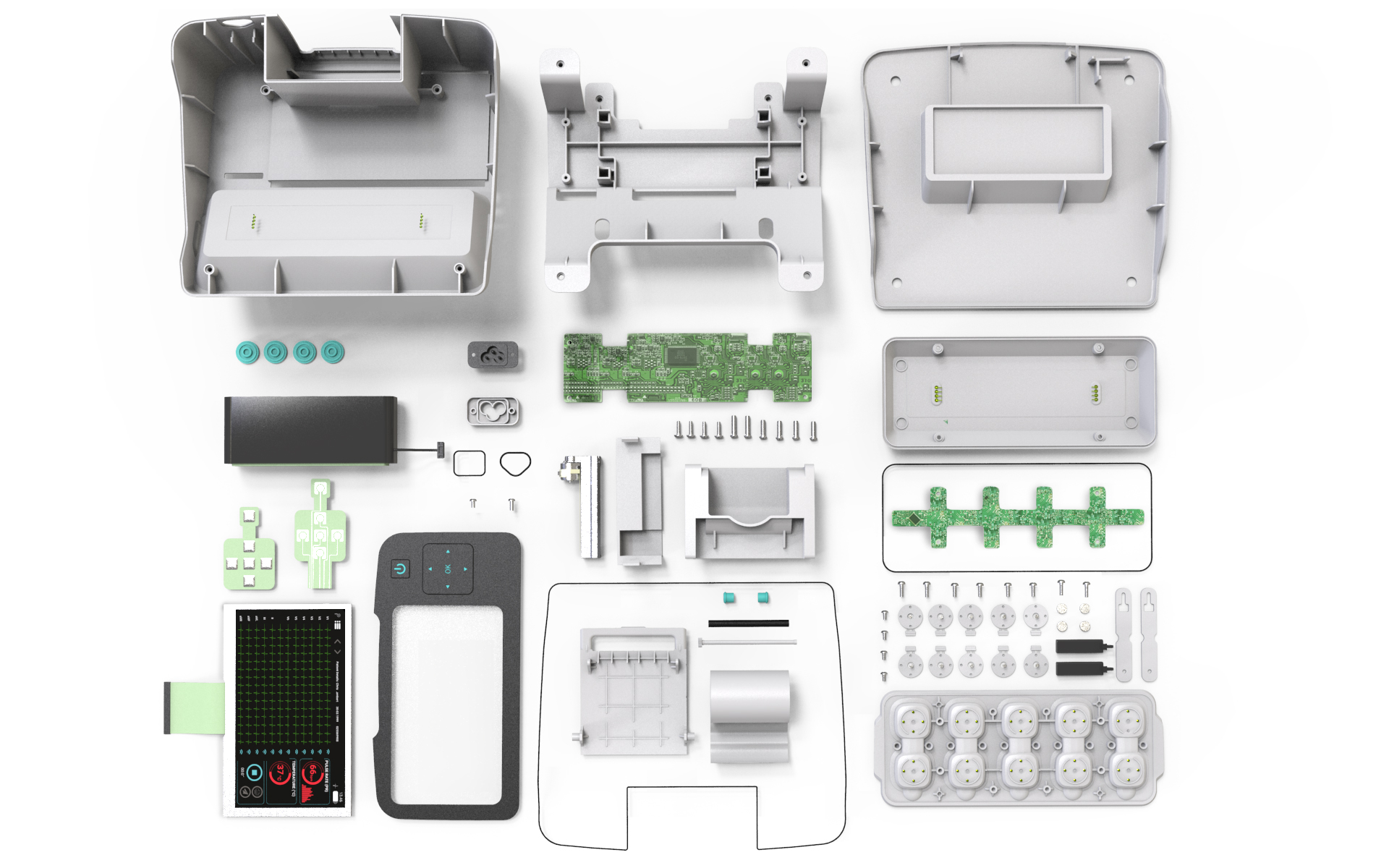

Exploded Render of Main ECG Unit
Here is all the internals of the ECG device. This consists of around 150 parts.
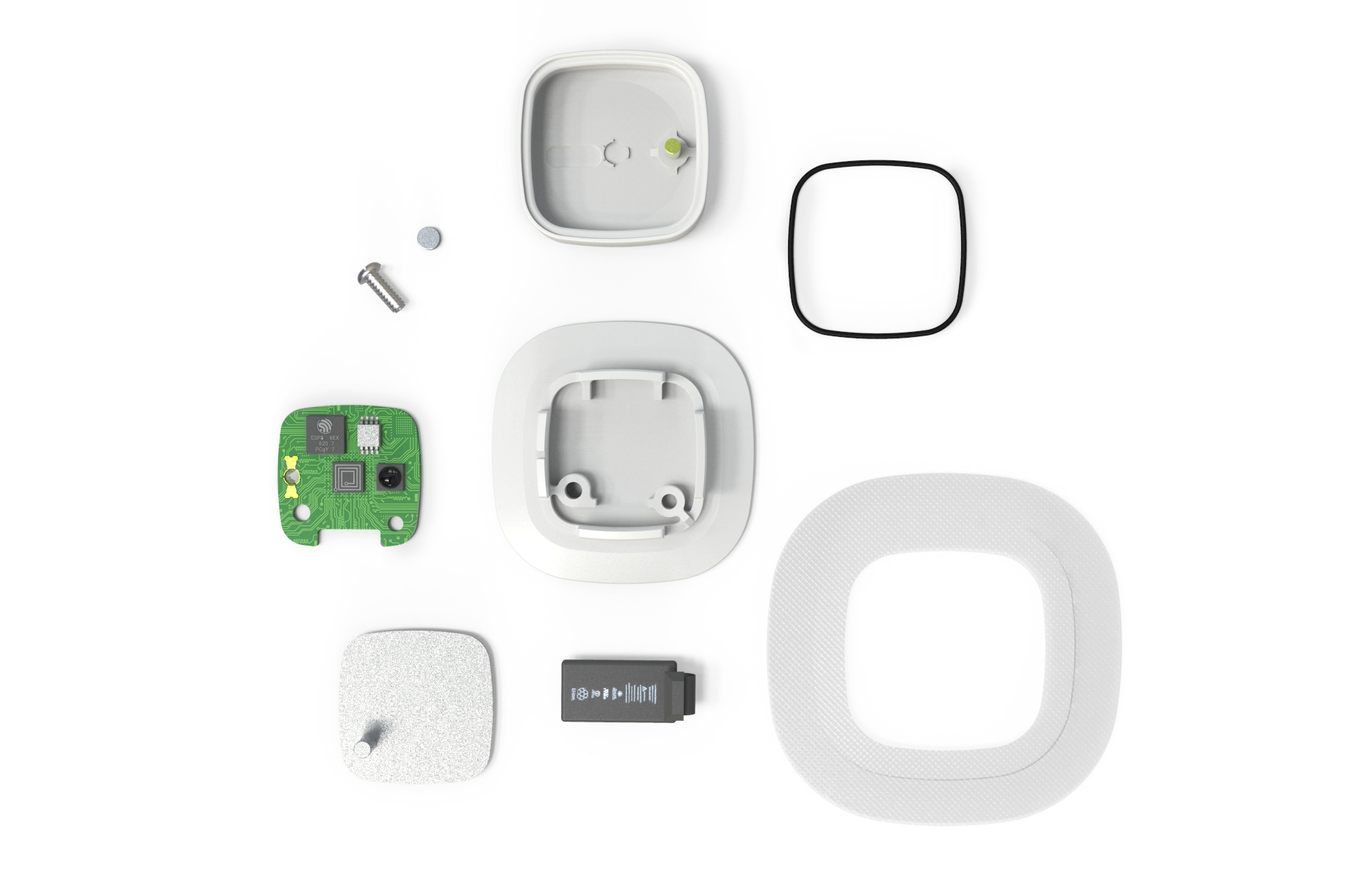

Exploded Render of Electrodes
Here is all the internals of the ECG Electrodes. The electrodes have been designed with end of life in mind where all of the components can be disassembled and easily recycled.
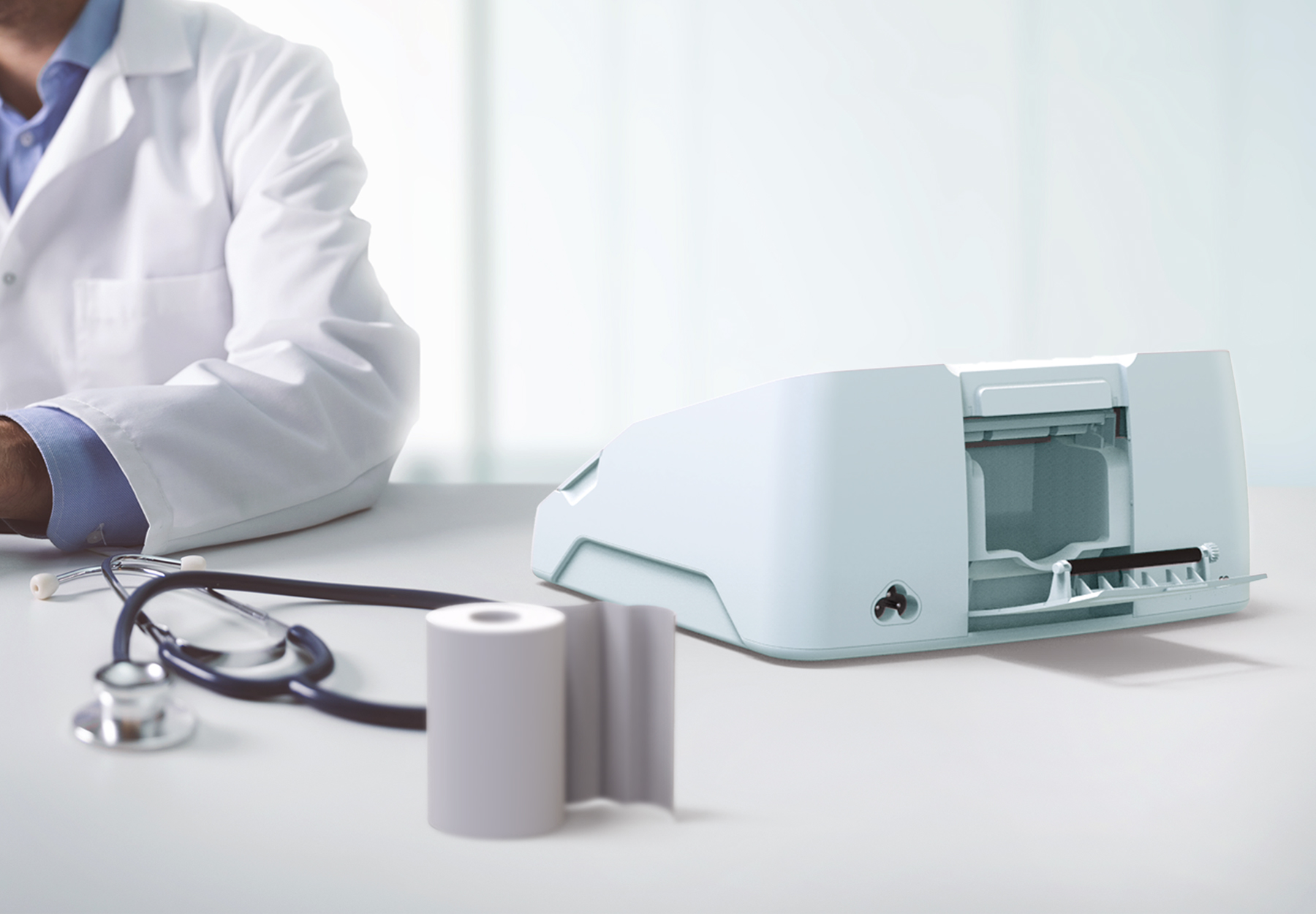

ECG Thermal Printer (Open)
If required, an in-built thermal printer can also provide an instant physical printout of the trace in the instance that the user is not connected to the internet.
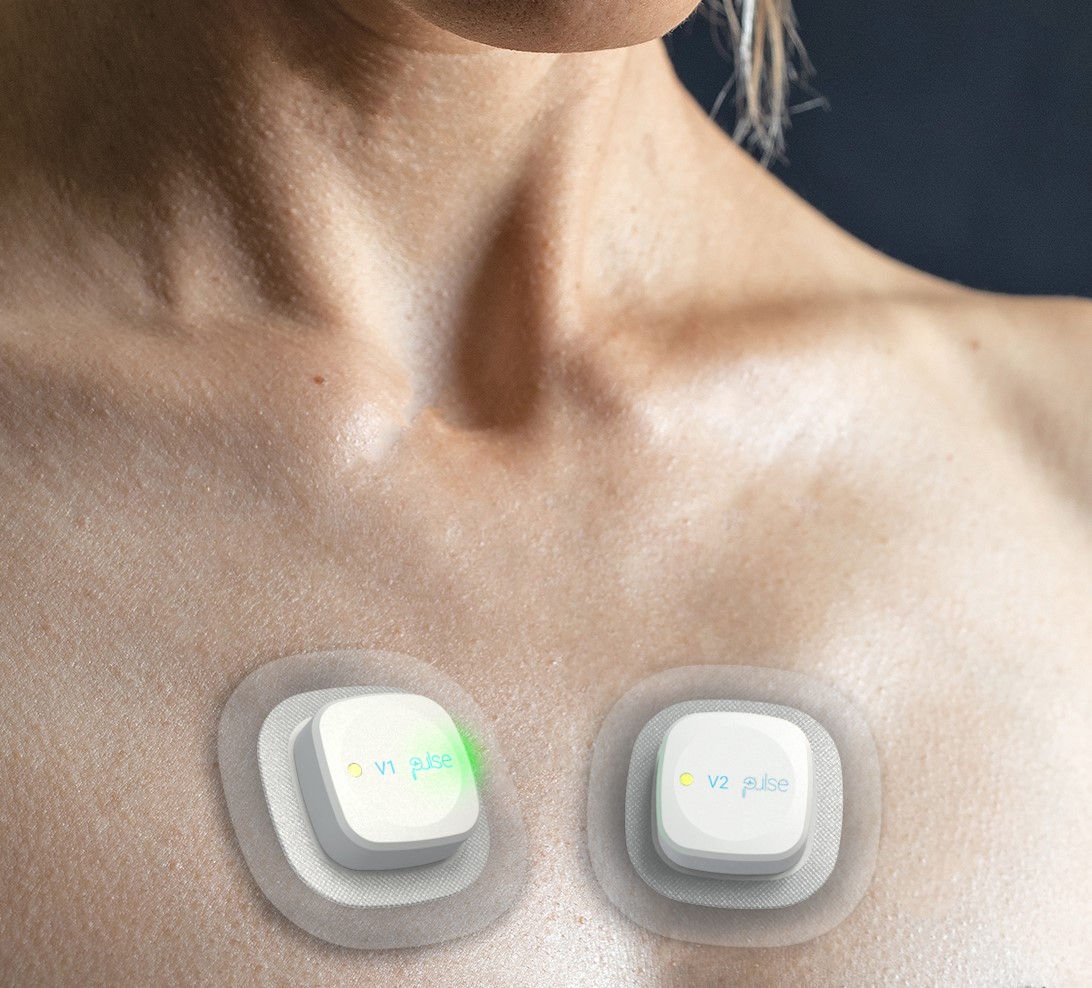

Electrodes Positioned On User (Female)
When the electrodes are hosted on a user the internal LED's will begin to subtly glow, prompting the user when they have connected to the main device.


Charging Tray and Electrodes
The detachable tray, complete with 10 electrodes, is charged through copper pins and is magnetically held in place on the front of the main unit. To indicate the charge of the electrodes a glowing LED within the tray design lets the user know how much battery power is left for each electrode.
Chris Lambert
I am the type of designer who not only wants a product to look great, but also to solve the problem and be easy to use. My design approach is one of aesthetic designs, with manufacture and sustainability in mind.
I like to tackle real-world problems that can be addressed by better design. I chose to redesign the ECG after hearing of the frustrations experienced by medical professionals in gaining rapid accurate readings and avoiding misdiagnosis. Currently, the greatest source of error revolves around false traces due to tangled wires that then require repeated tests. The ECG is a device that has been around for decades with few significant improvements.
During my work placement, I was part of a product development team that redesigned several pieces of medical equipment. I felt that the skills and knowledge gained from this could be applied to the ECG.
My strengths in ideation together with user feedback enabled me to rapidly envisage multiple forms for the product. My CAD skills allowed me to take these forms and apply them around the components while considering both the medical environment and manufacturing limitations.
I enjoy the whole process of design and aim to one day be able to design and manufacture products completely by myself. I would therefore like a career where I can experience all roles involved in the design process.
Final year project
Redesigning the Electrocardiogram (ECG) to Improve Device Connectivity, Accuracy and Ease of Use with Comfortable, Wireless Electrodes.
Work Experience
I was fortunate to have a one-year placement with 3formDesign in Whitchurch, Hampshire. Over the year, the company integrated me into a product design team covering several different specialities. We took on a great variety of projects that allowed me to get hands-on involvement with every aspect of design from conception to final production. This included designing for 3D printing, test rig designing, coding, CGI storyboard and patent drawings. I was also tasked to write user guide manuals and bills of materials for manufacturing. In addition, I was also responsible for the design of packaging, labels and logos. I took a key role in the design and manufacture of a veterinary surgical tool and also medical prosthetics. I was taught to confidently use CAD in a methodical manner, together with KeyShot rendering software, SolidWorks, Adobe suite and designed for 3D printing. Over this final year, I have continued to use these programmes and gained more experience, resulting in a highly professional look to my design.
My placement year enabled me to hone my creative and technical design skills whilst also teaching me the importance of designing around components and being aware of the limitations of manufacturing constraints.
Working within a small design company placed me in the position where I had to gain important general office skills including answering phones, meeting clients, liaising with suppliers in UK & abroad, recruitment, stock taking, marketing for the company and creating a new filing system. These skills will last for the rest of my career.
During that year, both my self-confidence and technical abilities improved significantly. I have developed a strong work ethic, striving for perfection in all areas, no matter which task I am given.